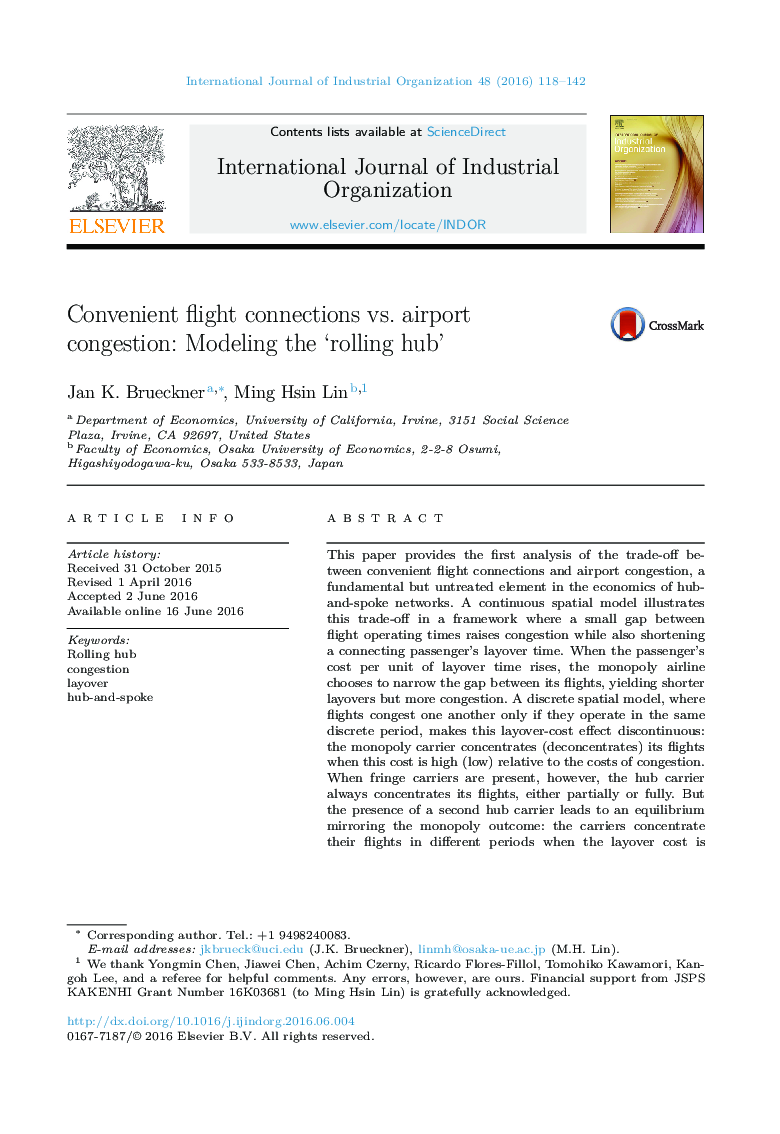| Article ID | Journal | Published Year | Pages | File Type |
|---|---|---|---|---|
| 5077808 | International Journal of Industrial Organization | 2016 | 25 Pages |
Abstract
This paper provides the first analysis of the trade-off between convenient flight connections and airport congestion, a fundamental but untreated element in the economics of hub-and-spoke networks. A continuous spatial model illustrates this trade-off in a framework where a small gap between flight operating times raises congestion while also shortening a connecting passenger's layover time. When the passenger's cost per unit of layover time rises, the monopoly airline chooses to narrow the gap between its flights, yielding shorter layovers but more congestion. A discrete spatial model, where flights congest one another only if they operate in the same discrete period, makes this layover-cost effect discontinuous: the monopoly carrier concentrates (deconcentrates) its flights when this cost is high (low) relative to the costs of congestion. When fringe carriers are present, however, the hub carrier always concentrates its flights, either partially or fully. But the presence of a second hub carrier leads to an equilibrium mirroring the monopoly outcome: the carriers concentrate their flights in different periods when the layover cost is high and deconcentrate them otherwise. The paper also presents a welfare analysis, showing that movement from the equilibrium to the social optimum typically requires greater carrier separation.
Keywords
Related Topics
Social Sciences and Humanities
Economics, Econometrics and Finance
Economics and Econometrics
Authors
Jan K. Brueckner, Ming Hsin Lin,
